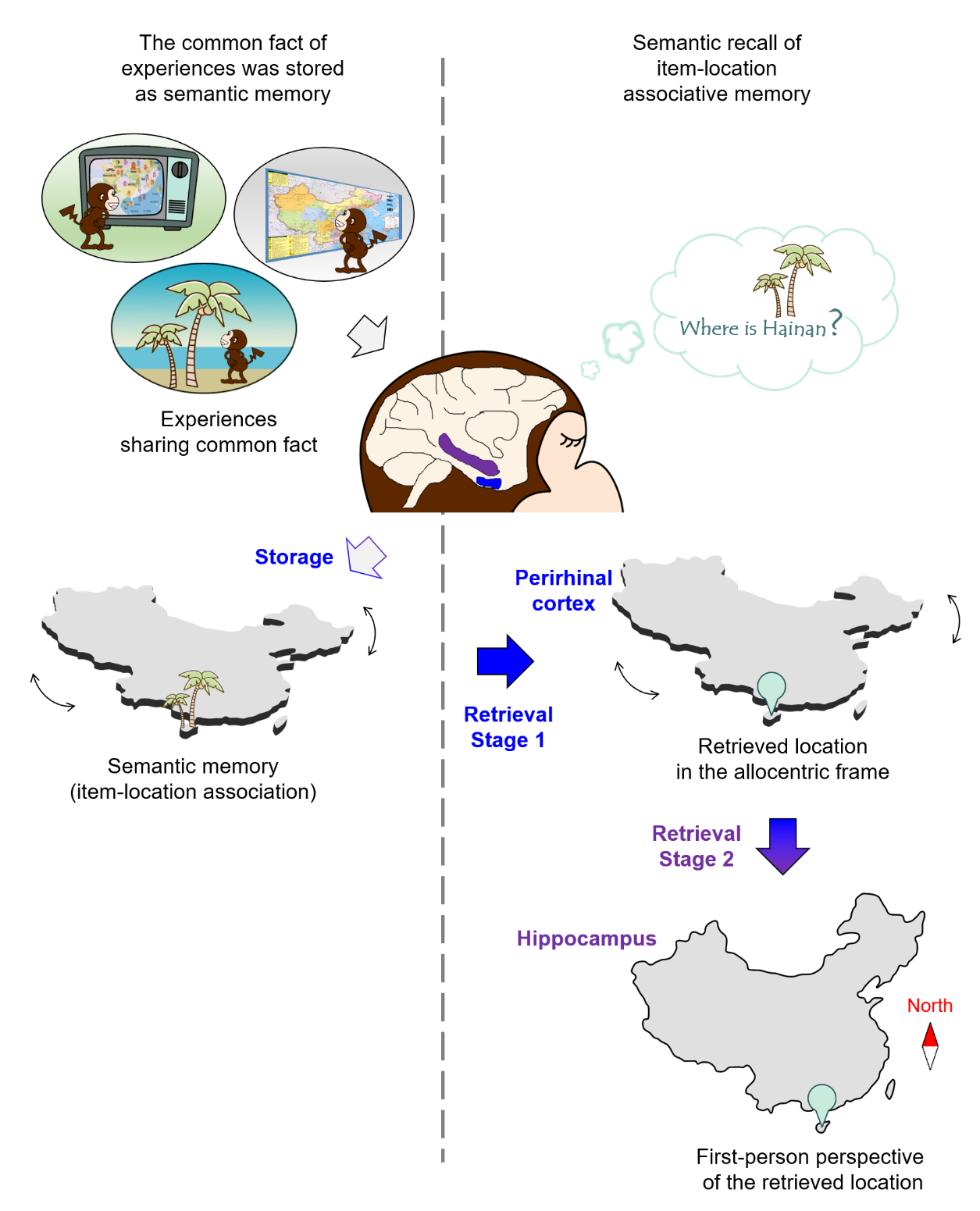Dr. Yuji Naya: Recall process of spatial memory in macaque medial temporal lobe

Abstract
The standard consolidation theory suggests that the hippocampus (HPC) is critically involved in acquiring new memory, while storage and recall gradually become independent of it. Converging studies have shown separate involvements of the perirhinal cortex (PRC) and parahippocampal cortex (PHC) in item and spatial processes, whereas HPC relates the item to a spatial context. These two strands of literature raise the following question; which brain region is involved in the recall process of item-location associative memory? To solve this question, this study applied an item-location associative (ILA) paradigm in a single-unit study of non-human primates. We trained two macaques to associate four visual item pairs with four locations on a background map in an allocentric manner before the recording sessions. In each trial, one visual item and the map image at a tilt (-90° to 90°) were sequentially presented as the item-cue and the context-cue, respectively. The macaques chose the item-cue location relative to the context-cue by positioning their gaze. Neurons in the PRC, PHC, and HPC, but not area TE, exhibited item-cue responses which signaled retrieval of item-location associative memory. This retrieval signal first appeared in the PRC, followed by the HPC and PHC. We examined whether neural representations of the retrieved locations were related to the external space that the macaques viewed. A positive representation similarity was found in the HPC and PHC, but not in the PRC, thus suggesting a contribution of the HPC to relate the retrieved location from the PRC with a first-person perspective of the subjects and provide the self-referenced retrieved location to the PHC. These results imply distinct but complementary contributions of the PRC and HPC to recall of item-location associative memory that can be used across multiple spatial contexts.
Original link: https://journals.plos.org/plosbiology/article?id=10.1371/journal.pbio.3002145

An electrophysiological study of monkey medial temporal lobe reveals a two-stage mechanism for remembering semantic memory, starting with retrieving its allocentric representation in the perirhinal cortex and followed by representing the retrieved information in the first-person perspective by hippocampal neurons.